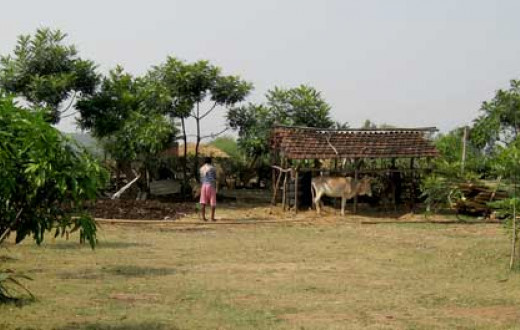Creating ODF villages, one area at a time
An ordinary and inevitable room of a house can change someone’s life. Extraordinarily. We’re talking about a bathroom, more specifically, a toilet.
A one-pointed determination to realize an open defecation free (ODF) India changed many lives. Shares Sharad Shinde, a villager from Saigaon, Maharashtra: “I used to face many difficulties in the monsoons. My children and wife used to go out for defecation. This ODF village project has not only comforted us but also inspired me to take up new such projects. I will make the lives around more comfortable and convenient.”
Many families like Shinde’s are beaming with joy. One significant relief, naturally, was being spared the embarrassment of defecating in the open. Women experienced better health, a sense of freedom and respect. A few of the many benefits of an ODF village.
Creating an ODF village: the how
Venkatesh Manglaram and his team were behind this successful initiative of creating ODF villages. They led the construction of over 19,300 toilets in Pune, Latur and Amravati regions in Maharashtra. What motivated them to work in rural areas creating ODF villages? Inspiration from Gurudev Sri Sri Ravi Shankar who envisions progressive rural development. “People need to focus on building toilets to live a healthy life and ward off diseases,” says Gurudev Sri Sri Ravi Shankar. He has also been advocating and working toward a cleaner India, and ODF villages.
The volunteer team had a holistic and participatory approach. This brought in systemic and behavioral changes. Villagers learned about their body, mind, and environment. They committed themselves to bringing about transformation. And it simply began with determination and a willingness to serve people. The team was vigilant at every step of the project - from material purchases and site supervision. Nita Gaikwad, a community leader in Rohkal village shares: “It would have taken decades for the villagers to construct the toilets without the support of volunteers.”
How it worked
The government’s Swachh Bharat Abhiyaan initiative has a specific scheme for toilet construction. A villager constructs a toilet with his own money. A government-appointed engineer certifies the site on completion. If the construction meets all the guidelines, the villager receives a grant of Rs. 12,000 for one toilet construction.
The Art of Living team of youth leaders mortgaged their jewelry and invested the money in toilet construction. After the government approved the toilets, the grant was used to repay the mortgage.
The volunteer team also taught the village residents meditation and other stress-elimination techniques.
Making a mark
An increase in the number of toilets is one feat. The project brought about an attitudinal change towards health and sanitation. A complete change in living, which has empowered women most of all.
“My son used to drop me to the ‘khet’ (field) in the morning and collect me at night, on his return from work. I had to be there all day long. The entire process has affected my health,” shares 82-year-old Baburao Balwantrao Pawar from Saigaon, Maharashtra.
This octogenarian had no choice. She simply could not make the long trek back home in the day. All that changed, when a toilet was constructed close to her house: “I can now happily stay at home!”
Source: The Art of Living Bureau of Communication
Published on: December 2017











